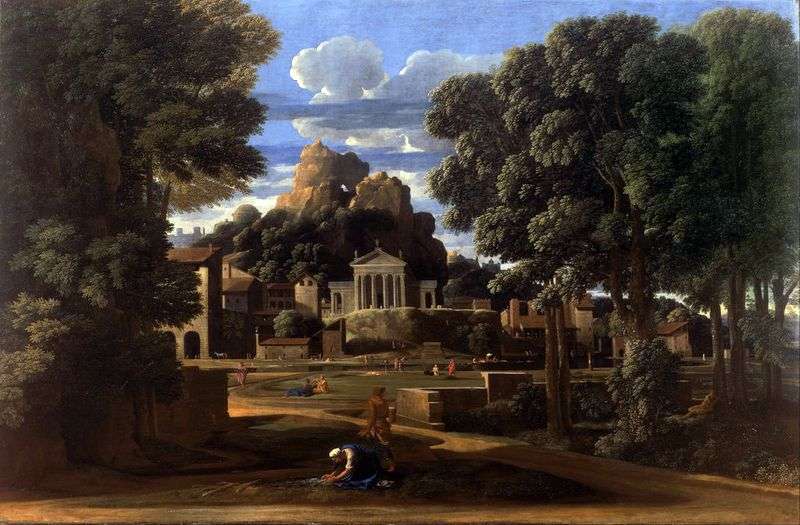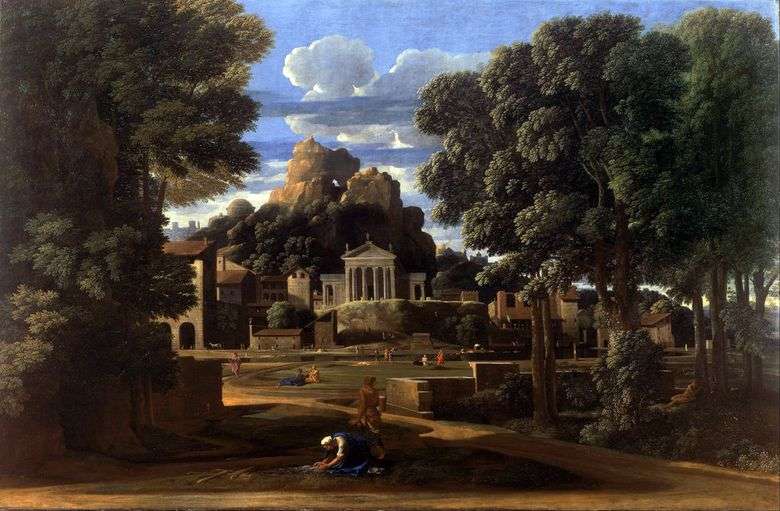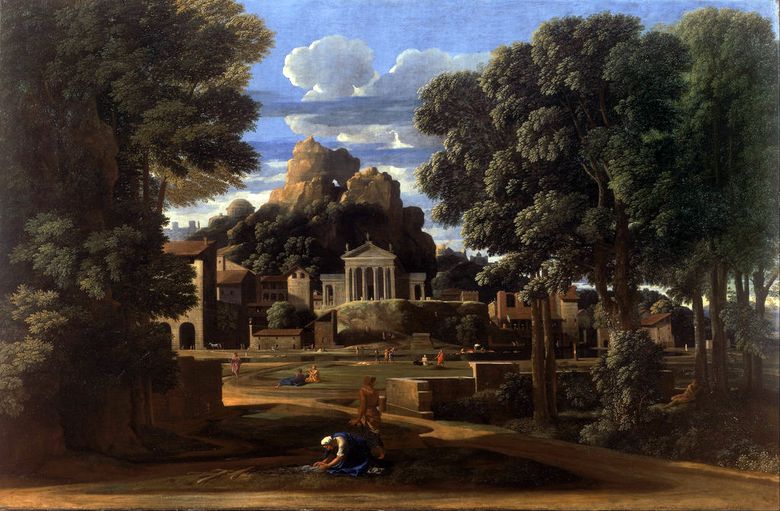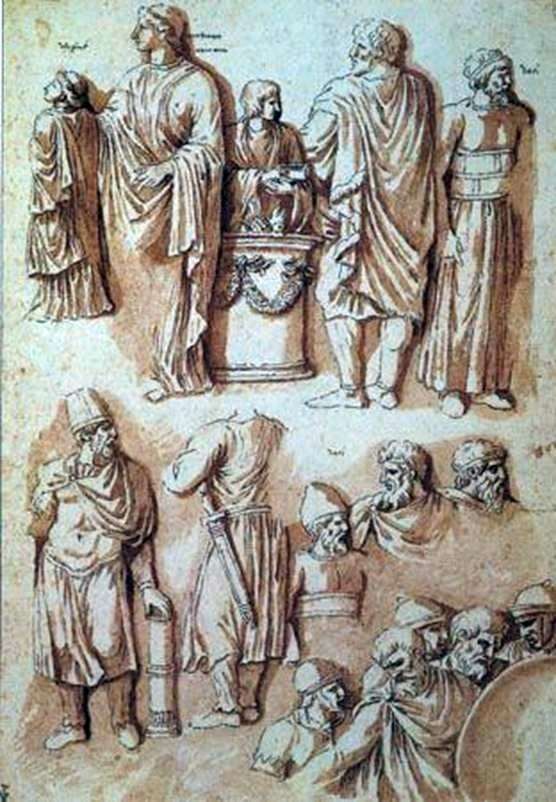
In 1648, Poussin painted two paired paintings, commissioned by a wealthy merchant named Serizier. Serizier did his business in Lyon, but he also had a house in Paris. Both paintings created for him represent the death of Phocion, an Athenian military leader.
Before us is the second one. Phocion served his homeland faithfully. From 322 to 318 BC. e. he was the de facto head of Athens, skillfully controlling the city and renowned for his justice. However, in 318 BC. e. in Athens, a political crisis erupted. Phocion was removed from his post, accused of plundering the city treasury and sentenced to death. Enemies of the commander were not enough just to execute him, they also wanted to mock his remains. The dust of Fokyon was forbidden to be buried in Athens.
Even his body was burned outside the city. Poussin depicts a moment full of sorrow and greatness: the widow of a warlord collects the ashes of her husband in order to secretly bury him in Athens. Note that in the very near future the political situation in the city changed, and the dust of Fokion was solemnly reburied, and a monument was erected at the tomb. The stern landscape serves as an organic decoration for the story about meanness and changeability of the mob told by Poussin, who are opposed by the loyalty and nobility of strong spirit people.
 Las cenizas de Phocion – Nicolas Poussin
Las cenizas de Phocion – Nicolas Poussin Cendres de Phocion – Nicolas Poussin
Cendres de Phocion – Nicolas Poussin Death of Germanicus by Nicolas Poussin
Death of Germanicus by Nicolas Poussin Holy Family with Six Angels by Nicolas Poussin
Holy Family with Six Angels by Nicolas Poussin Arcadian Shepherds by Nicolas Poussin
Arcadian Shepherds by Nicolas Poussin Landscape with a man who died from a snake bite by Nicolas Poussin
Landscape with a man who died from a snake bite by Nicolas Poussin Apollo and Daphne by Nicolas Poussin
Apollo and Daphne by Nicolas Poussin The figures from the column of Trajan by Nicolas Poussin
The figures from the column of Trajan by Nicolas Poussin